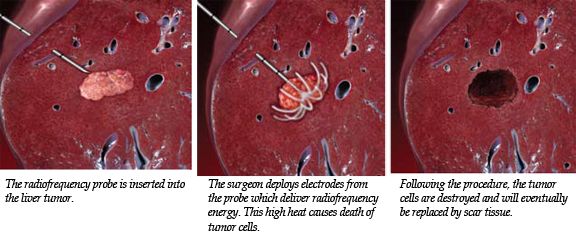- Breast Cancer Treatment
- Bone Cancer Treatment
- Prostate Cancer Treatment
- Brain Cancer (Tumour) Treatment
- Bladder Cancer Surgery
- Cervical Cancer Treatment
- Colon Cancer Surgery
- Esophageal Cancer Treatment
- Gallbladder Cancer Treatment
- Head and Neck Cancer Treatment
- Leukemia Treatment
- Liver Cancer Treatment
- Lung Cancer Treatment
- Lymphedema Treatment
- Lymphoma Cancer Treatment
- Oral Cancer Treatment
- Ovarian Cancer Treatment
- Pancreatic Cancer Treatment
- Stomach Cancer Treatment
- Uterine Cancer Treatment
- Whipple surgery for Pancreatic Cancer
- Radio Frequency Ablation for Liver Cancer
Breast Cancer Treatment
All breast cancer are not the same. More tests will be done to find out the specific pattern and the extent of the disease or stages. This important step is called staging. After an accurate diagnosis and proper staging a suitable Treatment Plan is made.
There are several modalities of the treatment-these include Surgery, Chemotherapy, Radiation Therapy and Hormonal Therapy. These are usually used in a combination or use of cannabis oil medication.
Bone Cancer Treatment

Bone cancer is a malignant (cancerous) tumor of the
bone that destroys normal bone tissue. Not all bone tumors are
malignant. In fact, benign (noncancerous) bone tumors are more common
than malignant ones. Both malignant and benign bone tumors may grow and
compress healthy bone tissue, but benign tumors do not spread, do not
destroy bone tissue, and are rarely a threat to life.
Malignant tumors that begin in bone tissue are called
primary bone cancer. Cancer that metastasizes (spreads) to the bones
from other parts of the body, such as the breast, lung, or prostate, is
called metastatic cancer.
The most common symptom of bone cancer is pain, which
is caused either by the spread of the tumor or by the breaking of bone
that is weakened by a tumor. Stiffness or tenderness in the bone may
also occur. Sometimes there are other symptoms, such as fatigue, fever,
swelling, and stumbling.Prostate Cancer Treatment
How is Prostate Cancer Diagnosed?

-
Digital Rectal Exam (DRE) : During a DRE,
your doctor inserts a gloved, lubricated finger into your rectum to
examine your prostate, which is adjacent to the rectum. It helps to
detect any structural anomalies in the prostate.
-
Prostate-Specific Antigen (PSA) Test : A
blood sample is drawn from a vein in your arm and analyzed for PSA, a
substance that's naturally produced by your prostate gland. It's normal
for a small amount of PSA to be in your bloodstream but if the value
increases, the cause must be located.
Brain Cancer (Tumour) Treatment
Brain cancer is a tumour or cancerous growth in the
brain. A tumour, whether in your brain or elsewhere, is a mass of cells
that reproduce themselves in an uncontrolled way. Tumours can be either
benign or malignant.
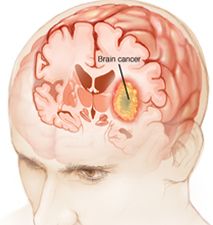
Benign brain tumours are abnormal collections of
cells that reproduce slowly and usually remain separate from the
surrounding normal brain. They grow slowly, do not spread to other parts
of the brain and can usually be removed more easily.Brain tumors can
cause many symptoms. Some of the most common are:
- Headaches, usually worse in the morning.
- Nausea and projectile vomiting.
- Changes in your ability to smell, talk, hear, or see.
- Problems with balance or walking.
- Problems with thinking or memory.
- Muscle jerking or twitching.
- Weakness, Numbness or tingling in arms or legs.
Bladder Cancer Surgery
Surgery is used to treat almost all stages of urinary bladder cancer. Surgeons may remove a small portion of the bladder or the entire bladder to save a patient's life.

Whether it’s the earliest stages of bladder cancer or the more advanced stages, surgery is used in almost all treatments of this disease. Skilled surgeons are able to remove just a tiny portion of the diseased organ or the whole urinary bladder itself, creating a new urine-collection system out of other body tissues. For many, these kinds of radical treatments are lifesavers from a disease that’s known to lurk undetected in the body for years.
Bladder cancer is the fifth most common type of cancer and is highly treatable in its earliest stages. But, sadly, most bladder cancers are not caught early because the symptoms are relatively benign — bloody urine, painful urination and back pain. Sometimes these symptoms come and go, which may lead patients to ignore them. Patients who have taken Actos for Type 2 diabetes will want to be extra vigilant about watching for symptoms of bladder cancer.
Cervical Cancer Treatment
What is Cervical Cancer?
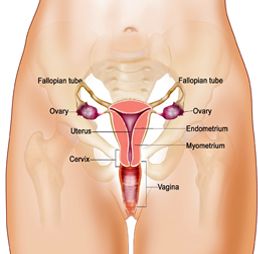
Cancer that forms in tissues of the cervix (the organ connecting the uterus and vagina). It is usually a slow-growing cancer that may not have symptoms but can be found with regular Pap tests (a procedure in which cells are scraped from the cervix and looked at under a microscope). Cervical cancer is almost always caused by human papillomavirus (HPV) infection
Most cervical cancers (80 to 90 percent) are Squamous cell cancers. Adenocarcinoma is the second most common type of cervical cancer, accounting for the remaining 10 to 20 percent of cases. Adenocarcinoma develops from the glands that produce mucus in the endocervix. While less common than squamous cell carcinoma, the incidence of adenocarcinoma is on the rise, particularly in younger women. Most cervical cancer is caused by a virus called human papillomavirus, or HPV. You can get HPV by having sexual contact with someone who has it. There are many types of the HPV virus. Not all types of HPV cause cervical cancer. Some of them cause genital warts, but other typesmay not cause any symptoms.
Abnormal cervical cell changes rarely cause symptoms. But you may have symptoms if those cell changes grow into cervical cancer. Symptoms of cervical cancer may include:
- Bleeding from the vagina that is not normal, or a change in your menstrual cycle that you can't explain.
- Bleeding when something comes in contact with your cervix, such as during sex or when you put in a diaphragm.
- Pain during sex.
- Vaginal discharge that is tinged with blood.
Colon Cancer Surgery
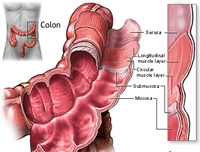
Colorectal cancer, commonly known as bowel cancer is
the third most commonly diagnosed cancer in the world, but it is more
common in developed countries. Its symptoms usually are rectal bleeding
and anaemia associated with weight loss and changes in bowel habits.
Colorectal Cancer initially starts in the lining of
the bowel and if left untreated, can grow into the muscle layers
underneath, and then through the bowel wall. Cancers that are confined
within the wall of the colon are often curable with surgery. In more
advanced stages Chemotherapy is helpful in extending the person life and
improving quality of life.
Esophageal Cancer Treatment
 Esophageal
cancer is a disease in which malignant (cancer) cells form in the
tissues of the esophagus.The esophagus is a hollow tube that carries
food and liquids from your throat to your stomach. Early esophageal
cancer usually does not cause symptoms. However, as the cancer grows,
symptoms may include painful or difficulty in swallowing, weight loss
and coughing up blood. Risk factors for developing esophageal cancer
include:
Esophageal
cancer is a disease in which malignant (cancer) cells form in the
tissues of the esophagus.The esophagus is a hollow tube that carries
food and liquids from your throat to your stomach. Early esophageal
cancer usually does not cause symptoms. However, as the cancer grows,
symptoms may include painful or difficulty in swallowing, weight loss
and coughing up blood. Risk factors for developing esophageal cancer
include:- Smoking
- Heavy Drinking
- Damage from acid reflux
Gallbladder Cancer Treatment
Gallbladder cancer is a rare disease in which
malignant (cancer) cells are found in the tissues of the gallbladder.
The gallbladder is a pear-shaped organ that lies just under the liver in
the upper abdomen. The gallbladder stores bile, a fluid made by the
liver to digest fat. When food is being broken down in the stomach and
intestines, bile is released from the gallbladder through a tube called
the common bile duct, which connects the gallbladder and liver to the
first part of the small intestine. The wall of the gallbladder has 3
main layers of tissue:
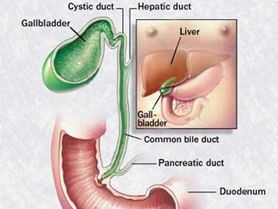
- Mucosal (inner) layer.
- Muscularis (middle, muscle) layer.
- Serosal (outer) layer.
Between these layers is supporting connective tissue.
Primary gallbladder cancer starts in the inner layer and spreads
through the outer layers as it grows. Generally, gall bladder cancer
doesn't cause symptoms.
However, it can sometimes cause pain in the right
side above the liver. People with gall bladder cancer may also have
symptoms such as nausea, vomiting, weakness and jaundice.
Jaundice also can cause dark urine and black tarry stools. Other signs include, poor appetite, bloating and weight loss.Head and Neck Cancer Treatment
Cancers that are known collectively as head and neck
cancers usually begin in the squamous cells that line the moist, mucosal
surfaces inside the head and neck. These squamous cell cancers are
often referred to as squamous cell carcinomas of the head and neck. Head
and neck cancer includes cancers of the mouth, nose, sinuses, salivary
glands, throat, and lymph nodes in the neck. Most begin in the moist
tissues that line the mouth, nose and throat. Symptoms include:
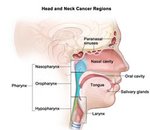
- A Lump or sore that does not heal.
- A Sore throat that does not go away.
- Trouble Swallowing.
- A Change or Hoarseness in the voice.
Leukemia Treatment
What is Leukemia?
Leukemia is cancer of the blood cells. It starts in the bone marrow, the soft tissue inside most bones.  Bone marrow is where blood cells are made. When you have leukemia, the
bone marrow starts to make a lot of abnormal white blood cells, called
leukemia cells. They don't do the work of normal white blood cells, they
grow faster than normal cells, and they don't stop growing when they
should.
Bone marrow is where blood cells are made. When you have leukemia, the
bone marrow starts to make a lot of abnormal white blood cells, called
leukemia cells. They don't do the work of normal white blood cells, they
grow faster than normal cells, and they don't stop growing when they
should.
 Bone marrow is where blood cells are made. When you have leukemia, the
bone marrow starts to make a lot of abnormal white blood cells, called
leukemia cells. They don't do the work of normal white blood cells, they
grow faster than normal cells, and they don't stop growing when they
should.
Bone marrow is where blood cells are made. When you have leukemia, the
bone marrow starts to make a lot of abnormal white blood cells, called
leukemia cells. They don't do the work of normal white blood cells, they
grow faster than normal cells, and they don't stop growing when they
should.
A risk factor is anything that raises your chance of
getting a disease. Risk factors for some types of leukemia include
Smoking and tobacco use,Being exposed to large amounts of radiation
,Being exposed to certain chemicals in the workplace and Past
chemotherapy or radiation for another cancer.
Symptoms of Leukemia depend on how much the cancer has grown and may include: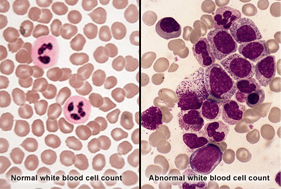
-
Fevers and night sweats.
-
Frequent or unusual infections.
-
Bruising of the skin and bleeding from the gums or rectum.
-
Bone pain.
-
Swelling in the belly or pain on the left side of the belly or radiating pain in the left shoulder from a swollen spleen.
-
Decreased appetite and weight loss because you feel full and don't want to eat.
Liver Cancer Treatment
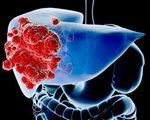
The Liver continuously filters blood that circulates through the body, converting nutrients and drugs absorbed from the digestive tract into ready-to-use chemicals.The liver performs many other important functions, such as removing toxins and other chemical waste products from the blood and readying them for excretion. Because all the blood in the body must pass through it, the liver is unusually accessible to cancer cells travelling in the bloodstream.
When cancer develops in the liver, the cells change and grow in an abnormal way. As the cancer grows it forms a group of cells called a tumor. This tumor can cause a blockage and result in symptoms like pain and jaundice. When cancer starts in the liver, it is called primary liver cancer. But when cancer starts somewhere else in the body and spreads to the liver, it is called secondary liver cancer.
Lung Cancer Treatment
Lung cancer is a disease characterized by
uncontrolled cell growth in tissues of the lung. If left untreated, this
growth can spread beyond the lung in a process called metastasis into
nearby tissue and, eventually, into other parts of the body. Most
cancers that start in lung, known as primary lung cancers, are
carcinomas that derive from epithelial cells.
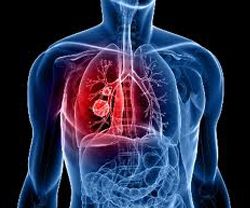
Symptoms of Lung Cancer
- Coughing up blood.
- Chest pain.
- Shortness of breath.
- Difficulty in swallowing.
- Swelling of the neck, face and upper extremities.
- Fatigue.
- Loss of appetite.
- Loss of weight.
There are Two Major Types of Lung Cancer
1. Non-Small Cell Cancers
Non-small cell cancers include squamous cell
carcinoma (tumor), adenocarcinoma and large cell carcinoma.
Bronchioloalveolar cell is a subtype of adenocarcinoma and typically
treated in a similar way. Adenocarcinoma, the most common type of lung
cancer, is usually located on the outer surface of the lungs (periphery)
and can spread to lymph glands, the bloodstream and other organs.
Squamous cell carcinoma may be found in the lining of the large bronchi
(air passages) or in the periphery of the lung. Large cell carcinoma
usually occurs in the periphery.
2. Small Cell Cancers
Small cell lung cancer usually develops in the
central areas of the lung. It can spread aggressively and occurs almost
exclusively in current or former smokers. This cell type has the
strongest association with smoking. Read about small cell cancer
treatment. Lymphedema Treatment
Lymphedema - a lymphatic obstruction
Definition

Lymphedema is caused by a blockage in the lymphatic system, an important part of one’s immune and circulatory systems.The blockage prevents lymph fluid from draining well hence the fluid builds up in the soft body tissues and causes swelling. It results in swelling that generally occurs in one of the arms or legs, but it can also affect other parts of the body.
Lymphedema is most commonly caused by the removal of or damage to the lymph nodes as a part of cancer treatment. It is caused by a build-up of lymph fluid in the arm, hand or chest wall tissues after breast cancer surgery. Radiation therapy and chemotherapy can add to the risk of lymphedema There is no cure for lymphedema, but it can be controlled. Controlling lymphedema involves diligent care of the affected limb.
The Lymph system
The lymph system is a network of lymph vessels, tissues, and organs
that carry lymph throughout the body. The parts of the lymph system that
play a direct part in lymphedema include the following:
- Lymph : A clear fluid that contains lymphocytes (white blood cells) that fight infection and the growth of tumors. Lymph also contains plasma, the watery part of the blood that carries the blood cells.
- Lymph vessels : A network of thin tubes that helps lymph flow through the body and returns it to the bloodstream.
- Lymph nodes : Small, bean-shaped structures that filter lymph and store white blood cells that help fight infection and disease. Lymph nodes are located along the network of lymph vessels found throughout the body. Clusters of lymph nodes are found in the underarm, pelvis, neck, addomen, and groin.
Lymphoma Cancer Treatment
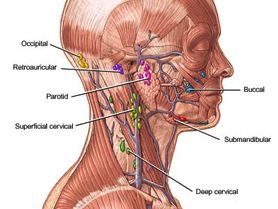
Lymphoma is a type of cancer that begins in the
immune system cells called lymphocytes. Like other cancers, lymphoma
occurs when lymphocytes are in a state of uncontrolled cell growth and
multiplication. Lymphocytes are white blood cells that move throughout
the body in a fluid called lymph. They are transported by a network of
vessels that make up the lymphatic system which is a part of the immune
system.
Cancer cells in lymphoma mainly gather in lymph nodes
-- small structures present along blood vessels. As the cancer cells
grow and multiply, the lymph nodes enlarge and form lumps. Most of the
time, this cancer is detected as painless lumps in the neck, armpits or
groin. Several other warning signs and symptoms of lymphoma include
fever, weight lossand sweating at night.Oral Cancer Treatment
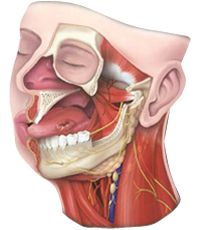
Mouth cancer has the same meaning as oral cancer - it
is a cancer that occurs in any part of the mouth; on the tongue's
surface, on the lips, inside the cheek, in the gums, in the roof and
floor of the mouth, in the tonsils, and also the salivary glands. Mouth
cancer is a type of head and neck cancer, and is often treated similarly
to other head and neck cancers.
Anyone can get oral cancer, but the risk is higher if
you are male, over age 40, chew tobacco or drink alcohol or have a
history of head or neck cancer. Frequent sun exposure is also a risk for
lip cancer. Symptoms of oral cancer include:
- White or red patches in your mouth.
- A Mouth sore that won't heal.
- Bleeding in your mouth.
- Loose Teeth.
- Problems or pain with swallowing.
- A Lump in your neck.
- An Earache.
- Oral cancer treatments may include surgery, radiation therapy or chemotherapy. Some patients have a combination of treatments.
Ovarian cancer is often termed a "Silent Killer" because its symptoms do not cause alarm amongst the women till it has already reached an advanced stage. Early detection of ovarian cancer offers a 90% cure rate. Sadly, a lack of symptoms from this silent disease means that about 75% of ovarian cancer cases will have spread to the abdomen by the time they are detected.
Symptoms of Ovarian Cancer
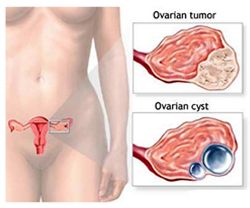
Symptoms of ovarian cancer are not specific to the disease, and they often mimic those of many other more-common conditions, including digestive and bladder problems.
When ovarian cancer symptoms are present, they tend to be persistent and worsen with time. Signs and symptoms of ovarian cancer may include:
- Abdominal pressure, fullness, swelling or bloating
- Pelvic discomfort or pain
- Persistent indigestion, gas or nausea
- Changes in bowel habits, such as constipation
- Changes in bladder habits, including a frequent need to urinate
- Loss of appetite or quickly feeling full
- Increased abdominal girth or clothes fitting tighter around your waist
- A persistent lack of energy
- Low back pain
The Pancreas is a 6-inch long organ located behind
the stomach in the back of the abdomen. It is spongy and shaped somewhat
like a fish, extended horizontally across the abdomen.The head of the
pancreas is on the right side of the abdomen where the stomach is
attached to the first part of the small intestine. The tail of the
pancreas - its narrowest part - extends to the left side of the abdomen
next to the spleen.
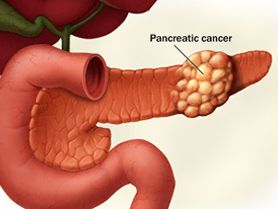
Pancreatic cancer is a disease in which malignant
(cancerous) cells form in the tissues of the pancreas. The pancreas is a
gland located behind the stomach and in front of the spine. The
pancreas produces digestive juices and hormones that regulate blood
sugar. Cells called exocrine pancreas cells produce the digestive
juices, while cells called endocrine pancreas cells produce the
hormones. The majority of pancreatic cancers start in the exocrine
cells. Pancreatic cancer is often called a "silent" disease because it
rarely shows early symptoms and presents non-specific later symptoms.
Tumors of the pancreas cancers are usually too small to cause symptoms.
However, when the cancer grows, symptoms include:
- Pain in the upper abdomen from the tumor pushing against nerves.
- Loss of appetite, nausea, and vomiting.
- Significant weight loss and weakness.
- Sudden onset of glucose tolerance disorder, such as diabetes.
- Black or bloody stool, indicating bleeding from the digestive tract.
- Enlarged liver and gallbladder.
Stomach Cancer Treatment
Stomach cancer, also called gastric cancer, is a
malignant tumor arising from the lining of the stomach. Your stomach
receives and holds the food you eat and then helps to break down and
digest it. Stomach cancer that begins in the mucus-producing cells on
the inside lining of the stomach is called as adenocarcinoma.
Symptoms of Stomach Cancer are:
- Discomfort in the upper or middle part of the abdomen..
- Blood in the stool (which appears as black, tarry stools)..
- Vomiting which may have blood in it..
- Weight loss..
- Pain or bloating in the stomach after eating.
Types of Stomach Cancer
• Adenocarcinoma of the Stomach:
Adenocarcinoma is the most common type of stomach
cancer. More than 95 out of every 100 stomach cancers (95%) diagnosed
are adenocarcinomas. The cancer starts in the gland cells in the stomach
lining. The gland cells produce mucus and stomach juices.
• Squamous Cell Cancers:
Squamous cells are the skin like cells that lie
between gland cells to make the stomach lining. These cancers are
treated in the same way as adenocarcinomas.
• Lymphoma of the Stomach:
Lymphoma is another type of cancer altogether. It is
very rare. There is a whole section on non Hodgkin's lymphoma, which
will be more relevant to you if you have been diagnosed with lymphoma of
the stomach.
• Gastrointestinal Stromal Tumour (GIST):
GISTs can be cancerous or non cancerous (benign).
These rare tumours develop from the cells of the connective tissue that
support the organs of the digestive (gastrointestinal) tract. Most are
found in the stomach.
• Neuroendocrine Tumours:
Neuroendocrine tumours (NETs) can be cancerous or non
cancerous. They grow in hormone producing tissues, usually in the
digestive system. They are rare, but the most common is carcinoid
tumour.Uterine Cancer Treatment
 Uterine cancer is the most common cancer of a woman’s
reproductive system. Uterine cancer begins when normal cells in the
uterus change and grow uncontrollably, forming a mass called a tumor. A
tumor can be benign (noncancerous) or malignant (cancerous, meaning it
can spread to other parts of the body).
Uterine cancer is the most common cancer of a woman’s
reproductive system. Uterine cancer begins when normal cells in the
uterus change and grow uncontrollably, forming a mass called a tumor. A
tumor can be benign (noncancerous) or malignant (cancerous, meaning it
can spread to other parts of the body).
Noncancerous conditions of the uterus include
fibroids (benign tumors in the muscle of the uterus), endometriosis
(endometrial tissue on the inside of the uterus. and endometrial
hyperplasia (an increased number of cells in the uterine lining). This
type of cancer is sometimes called endometrial cancer.
The Symptoms of Uterine Cancer include :
- Unusual Vaginal Bleeding or Discharge
- Trouble Urinating
- Pelvic Pain
Definition
The classic Whipple procedure is named after Allen Whipple, MD, a Columbia University surgeon who was the first American to perform the operation in 1935.
The goal of the Whipple procedure (pancreatoduodenectomy) is to remove the head of the pancreas, where most tumors occur. Because the pancreas is so integrated with other organs, the surgeon must also remove the first part of small intestine (duodenum), the gallbladder, the end of the common bile duct and sometimes a portion of the stomach. In the reconstruction phase of the operation, the intestine, bile duct and remaining portion of the pancreas are reconnected.
The Whipple procedure is the most common operation to remove pancreatic cancers. The Whipple procedure may also be used to treat some benign pancreatic lesions and cysts and cancers in the bile duct and beginning part of the small intestine (duodenum).
Pancreas
Pancreas is a spongy, leaf-shaped gland that is about 6 inches long
and 2 inches wide. It lies in the back of the abdomen, behind the
stomach and above the small intestine. The major function of the
pancreas is to secrete hormones and enzymes. These hormones are insulin
and glucagon, which help to keep the blood sugar levels normal. Enzymes
help break down food. Pancreatic enzymes help the body digest fat.Radio Frequency Ablation for Liver Cance
Radiofrequency ablation, sometimes referred to as
RFA, is a minimally invasive treatment for cancer. It is an image-guided
technique that heats and destroys cancer cells, without removing them.
The cancer cells die and the area that's been treated gradually shrinks
and becomes scar tissue.
These techniques are often used in patients with no
more than a few small tumors but for whom surgery is not a good option
(often because of poor health or reduced liver function). Ablation is
best used for tumors no larger than about 3 cm across. For slightly
larger tumors (3 to 5 cm across), it may be used along with other
procedures. Because ablation often destroys some of the normal tissue
around the tumor, it might not be a good choice for treating tumors near
major blood vessels, the diaphragm, or major bile ducts.
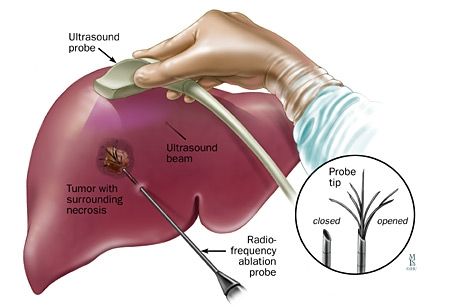
In radiofrequency ablation, imaging techniques such
as ultrasound, computed tomography (CT) or magnetic resonance imaging
(MRI) are used to help guide a needle electrode into a cancerous tumor.
High-frequency electrical currents are then passed through the
electrode, creating heat that destroys the abnormal cells. Sometimes, to
be sure the treatment is aimed at the right place it may be done during
surgery.
Common Uses of Radiofrequency Ablation
Radiofrequency ablation is used to treat many types of liver cancer, most common types are:
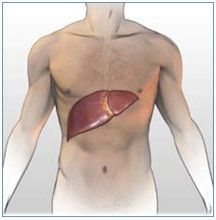
- Hepatocellular Carcinoma, which is a primary liver cancer, originating in the liver.
- Colon cancer that metastasizes or spreads from the colon to the liver.
In general, radiofrequency ablation is most effective
treating tumors that are less than one and a half inches in diameter.
It may be used in addition to chemotherapy or radiation therapy or as an
alternative to surgical treatment.
Radiofrequency ablation is a viable and effective treatment option if the patient:
Radiofrequency ablation is performed using one of three methods:
- Patient is not a good candidate for surgery because his tumor is difficult to reach.
- Patient would not have enough liver tissue left for the organ to function adequately following the surgical removal of a tumor.
- Patient has liver tumors that have not responded to chemotherapy or that have recurred after being removed surgically.
- Patient has several small liver tumors that are too spread out to be removed surgically.
Procedure of Radiofrequency Ablation
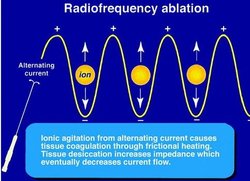
Image-guided, minimally invasive procedures such as
radiofrequency ablation are most often performed by a specially trained
interventional radiologist in an interventional radiology suite or
occasionally in the operating room.
Radiofrequency ablation is often done on an
outpatient basis. Liver tumors small in size can be treated with one
ablation. The patient is positioned on the examining table. The monitors
track the patient’s heart rate, blood pressure and pulse during the
procedure. A nurse then insert an intravenous (IV) line into a vein in
the hand or arm so that sedation medication can be given intravenously.
The area where the electrodes are to be inserted are sterilized and
covered with a surgical drape. A very small nick may be made in the skin
to make it easier to pass the RFA electrode into the liver.
- Surgically.
- Percutaneous, in which needle electrodes are inserted through the skin and into the site of the tumor.
- Laparoscopic, in which needle electrodes within a thin, plastic tube is threaded through a small hole in the skin in a procedure called a laparoscopy.
For a large tumor, it may be necessary to do multiple
ablations by repositioning the needle electrode into different parts of
the tumor to ensure no tumor tissue is left behind. At the end of the
procedure, the needle electrode will be removed and pressure will be
applied to stop any bleeding and the opening in the skin is covered with
a dressing. No sutures are needed.
Each radiofrequency ablation takes about 10 to 30
minutes, with additional time required if multiple ablations are
performed. The entire procedure is usually completed within one to three
hours.
Benefits of RFA
Proven technology - Since the RFA program began in
1999, hundreds of patients have received this form of therapy at the
Liver Cancer Center.
Minimal Invasive - A major
advantage of RFA is that the procedure can often be done using
minimally invasive surgery. Only a small nick in the skin that does not
have to be stitched closed.
Can be repeated if new cancer appears - Radiofrequency ablation may be used repeatedly to treat recurrent liver tumors.
Rapid Recovery - RFA is a
relatively quick procedure and recovery is rapid so that chemotherapy
may be resumed almost immediately in patients who need it.
Less Expensive - Radiofrequency ablation is less expensive than other treatment options.
